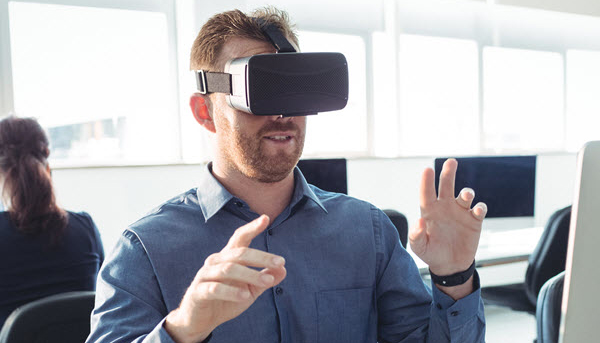ATD Blog
Get in the Driver’s Seat: UPS Explores VR Training
Wed Feb 21 2018

Bookmark
A new generation of virtual reality is bringing immersion to new levels. And falling hardware prices, thanks to the latest offerings from Oculus Rift and HTC Vive, are bringing VR-based training to new audiences. In fact, market researcher Tractica forecasts that the business market for VR hardware and content will grow to $9.2 billion by 2021. That’s good news for industries that need to deliver training for high-risk job roles.
According to Anders Gronstedt, an expert on bringing new technologies to the learning experience, virtual reality simulators are a good options for any task “that’s too dangerous, expensive, or inconvenient to practice in real life.” Think flight simulators and training for warfighters or medical practitioners.
Vinay Narayan, HTC Vive’s executive director, agrees. He says that VR offers two distinct value propositions. One is immersion, or the degree of the user’s mental engagement. “The higher the immersion, the better the training and learning environment,” says Narayan. The other is access: “VR gives you access to environments that are imagined, difficult to create or re-create, and those that are inaccessible.”
It should come as no surprise then that UPS has incorporated VR technology into its driver training. Narayan explains that VR technology is an extremely useful training tool, especially in applications such as defensive driving. “When trying to develop such corrective behavior, you can reinforce habits effectively because the experience feels real and mimics real-life situations,” he says.
Joe Finamore is vice president of global leadership and talent development for UPS. In UPS: Driving Results Through Virtual Reality and Simulation-Based Training, he describes how UPS uses a blended approach to teach driver candidates how to safely and confidently perform three vital tasks: handle their vehicles, employ delivery information acquisition device, and pick up and deliver packages.
For the VR portion of this training, the “drivers” are safely seated behind a desk at a UPS training facility, with their hands gripping a simulated steering wheel. They wear a HTC-Vive headset that presents a 360-degree panorama of an urban streetscape, complete with assorted safety hazards to their left and right, high and low. During the exercise, learners are expected to correctly identify each safety hazard before proceeding on a tightly routed journey through a neighborhood.
Already a success at UPS, the ATD Research report notes the company is interested in seeing how the fast-growing VR field will add eye-tracking technology that will measure where the eyes of a learner wearing a VR headset is looking. Laura Collings, a UPS learning manager, says that she eagerly awaits this advance, adding that it has “direct application to the hazard awareness learning module.”
No doubt, VR training has drawn enthusiastic support from the employees and talent development staff. But the company’s new chief information and engineering officer, Juan Perez, as well as its president of U.S. operations, Myron Gray are also on board, in large part because “employing new technologies wherever they might improve performance” is an integral part of the UPS’s mission to maximize service to its customers.
“Virtual reality offers a big technological leap in the realm of driver safety training,” Perez enthuses. “\[It\] creates a hyper-realistic streetscape that will dazzle even the youngest of our drivers whose previous exposure to the technology was through video games.”
Such ringing endorsements from the C-suite helped make the VR module adoption “one of the easier initiatives that we’ve undertaken of this scope,” says Finamore.

